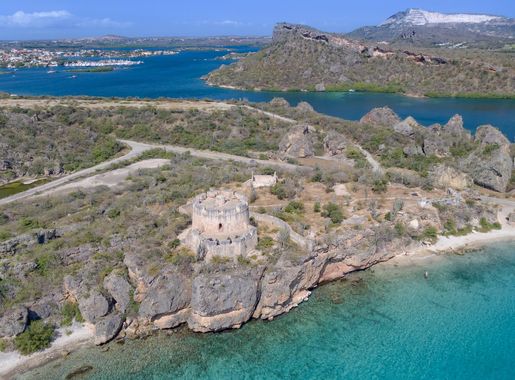
Caracas Bay: The Hidden Gem of Curacao
Discover Caracas Bay in Curacao: A perfect blend of history, adventure, and tranquility, ideal for snorkeling, hiking, and savoring local cuisine.
Nestled on the southeastern coast of Curacao, Caracas Bay is a delightful blend of history, nature, and tranquility. This lesser-known destination offers a unique escape from the bustling cities, making it perfect for tourists who want to experience the island's true essence. Caracas Bay is rich in history, with the ruins of Fort Beekenburg standing as a testament to the island's colonial past. Built in 1703, this fort has witnessed numerous battles and provides a panoramic view of the bay and its surroundings. A short hike up to the fort is a must for history enthusiasts and photographers alike. The bay itself is a haven for water sports lovers. Its calm and clear waters are ideal for snorkeling and diving, where you can explore vibrant coral reefs teeming with marine life. Windsurfing and kayaking are also popular activities, thanks to the favorable wind conditions and serene environment. For those who prefer to relax, the pristine beaches offer a perfect spot to unwind and soak up the sun. Caracas Bay is surrounded by lush greenery and offers several scenic trails for hikers. The nearby Tafelberg mountain provides a challenging yet rewarding trek, with breathtaking views of the island from the summit. The area is also home to the Spanish Water Lagoon, where you can enjoy a peaceful boat ride or simply marvel at the natural beauty. Local cuisine is another highlight of Caracas Bay. The area boasts several quaint restaurants and beach bars where you can savor traditional dishes and fresh seafood. Enjoy a meal with your toes in the sand while listening to the soothing sounds of the waves.
Local tips in Caracas Bay
- Visit early in the morning to avoid crowds at Fort Beekenburg and enjoy the sunrise.
- Bring your snorkeling gear or rent some on-site to explore the vibrant underwater world.
- Wear comfortable shoes for hiking, especially if you plan to trek up Tafelberg mountain.
- Try the local seafood at the beachside restaurants for an authentic culinary experience.
- Check the wind conditions if you plan to windsurf or kayak for the best experience.
Caracas Bay: The Hidden Gem of Curacao
Nestled on the southeastern coast of Curacao, Caracas Bay is a delightful blend of history, nature, and tranquility. This lesser-known destination offers a unique escape from the bustling cities, making it perfect for tourists who want to experience the island's true essence. Caracas Bay is rich in history, with the ruins of Fort Beekenburg standing as a testament to the island's colonial past. Built in 1703, this fort has witnessed numerous battles and provides a panoramic view of the bay and its surroundings. A short hike up to the fort is a must for history enthusiasts and photographers alike. The bay itself is a haven for water sports lovers. Its calm and clear waters are ideal for snorkeling and diving, where you can explore vibrant coral reefs teeming with marine life. Windsurfing and kayaking are also popular activities, thanks to the favorable wind conditions and serene environment. For those who prefer to relax, the pristine beaches offer a perfect spot to unwind and soak up the sun. Caracas Bay is surrounded by lush greenery and offers several scenic trails for hikers. The nearby Tafelberg mountain provides a challenging yet rewarding trek, with breathtaking views of the island from the summit. The area is also home to the Spanish Water Lagoon, where you can enjoy a peaceful boat ride or simply marvel at the natural beauty. Local cuisine is another highlight of Caracas Bay. The area boasts several quaint restaurants and beach bars where you can savor traditional dishes and fresh seafood. Enjoy a meal with your toes in the sand while listening to the soothing sounds of the waves.
When is the best time to go to Caracas Bay?
Iconic landmarks you can’t miss
Queen Emma Bridge
Explore the architectural beauty and vibrant culture of Willemstad at the iconic Queen Emma Bridge, a must-visit for every traveler in Curaçao.
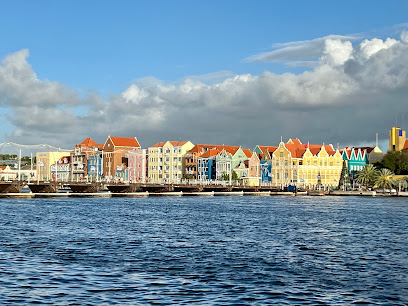
Mambo Beach
Discover Mambo Beach in Willemstad, Curaçao - a vibrant paradise offering soft sands, crystal-clear waters, and thrilling activities for every traveler.
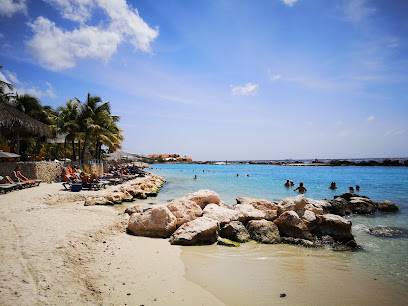
Curaçao Sea Aquarium
Explore the vibrant marine life and captivating exhibits at the Curaçao Sea Aquarium, a must-visit destination for ocean lovers and families.
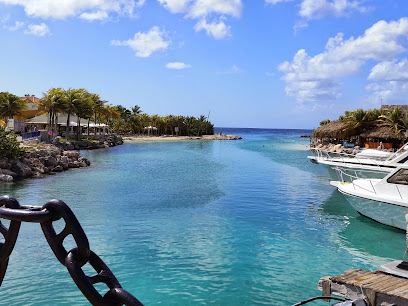
Hato Caves
Discover the captivating beauty and rich history of the Hato Caves, a stunning natural attraction in Curaçao for every adventurer.

Old Market
Experience the vibrant atmosphere and culinary delights of Old Market in Willemstad, a historical hub of culture and flavor in Curaçao.
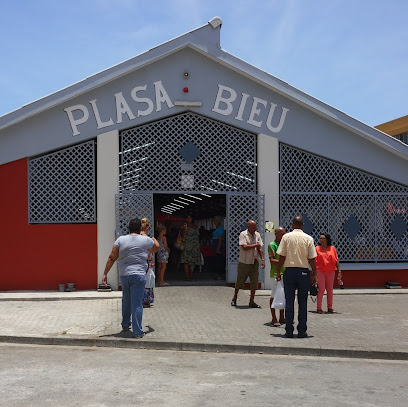
Mermaid Boat Trips Curacao
Explore Curacao's stunning coastline with Mermaid Boat Trips, offering unforgettable adventures on the crystal-clear Caribbean Sea.
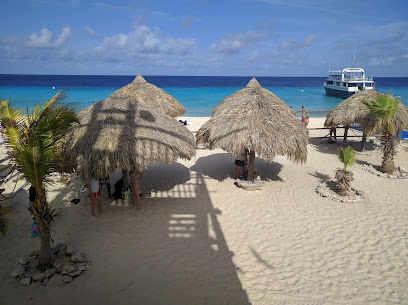
Museum Kura Hulanda
Discover the rich cultural heritage of Curaçao at Museum Kura Hulanda, where history comes alive through captivating exhibits and artifacts.
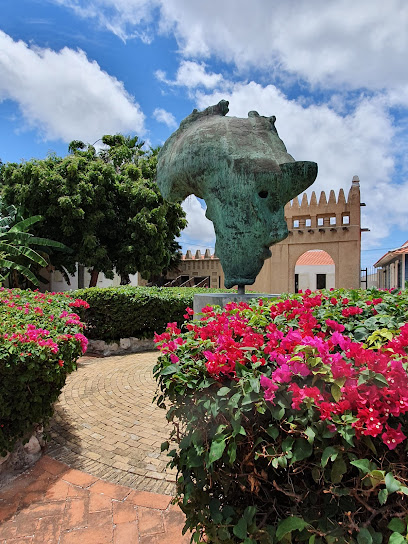
Fort Beekenburg
Explore the captivating history of Curaçao at Fort Beekenburg, a stunning historical landmark with breathtaking views and rich cultural significance.
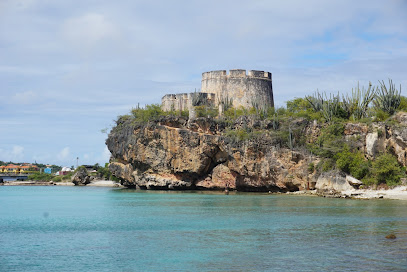
Tugboat Beach
Experience the tranquil beauty and vibrant marine life at Tugboat Beach, a must-visit coastal gem in Curaçao.
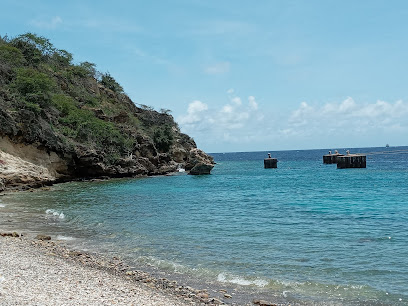
Dolphin Academy Curacao
Discover the wonders of marine life and swim with dolphins at Dolphin Academy Curacao, an unforgettable experience for animal lovers and adventurers.
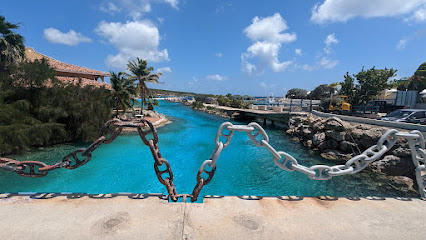
The Curaçao Museum
Explore vibrant art and history at The Curaçao Museum, a cultural treasure in Willemstad that showcases the island's diverse heritage.
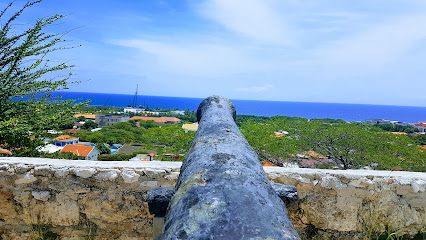
Miss Ann Boattrips Curacao - Marina
Explore the beauty of Curaçao with Miss Ann Boattrips - your gateway to unforgettable marine adventures and breathtaking island excursions.
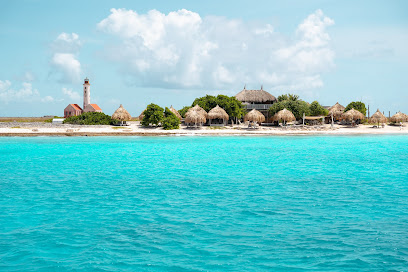
Serena's Art Factory
Explore the vibrant creativity of Curacao at Serena's Art Factory, where local artistry and cultural heritage come to life in an inspiring setting.
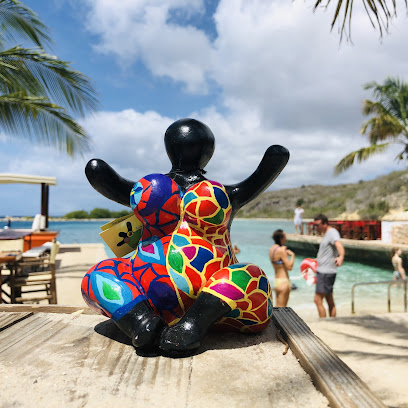
Blue Bay, Curaçao
Experience the stunning beauty of Blue Bay, Curaçao, where crystal-clear waters and vibrant culture create the ultimate beach getaway.
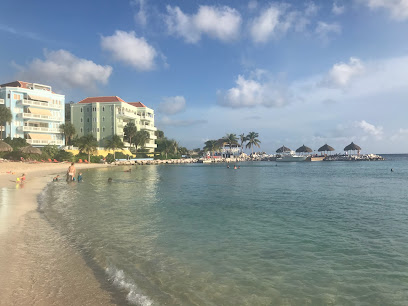
Jan Thiel Beach
Discover Jan Thiel Beach in Curaçao, a stunning destination with white sands, clear waters, and vibrant local culture for a perfect tropical getaway.
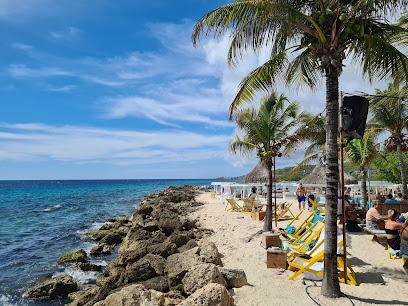
Unmissable attractions to see
Curaçao Sea Aquarium
Explore the vibrant marine life of the Caribbean at the Curaçao Sea Aquarium, a top tourist attraction in Willemstad, offering unforgettable encounters and educational experiences.
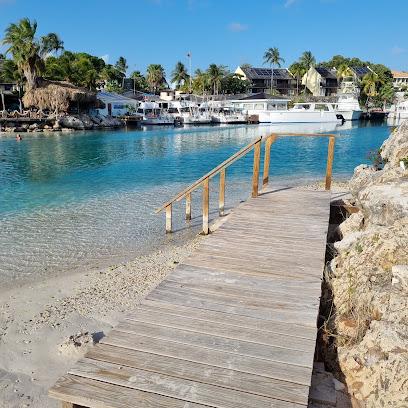
Floating Market
Discover the colorful Floating Market in Willemstad, rich in local culture, fresh produce, and unique crafts, embodying the spirit of Curaçao.
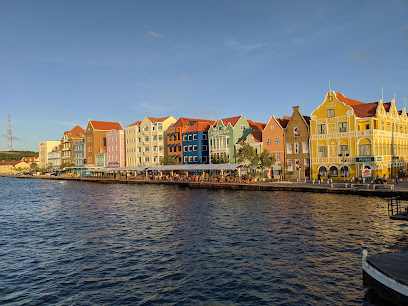
Marie Pampoen Beach
Explore the idyllic Marie Pampoen Beach in Willemstad, Curaçao - a stunning paradise for sunbathing, snorkeling, and unforgettable sunsets.
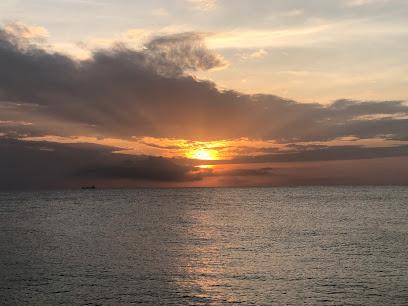
Den Paradera Herb Garden Curaçao by Dinah Veeris
Explore the vibrant Den Paradera Herb Garden in Curaçao, where nature meets tradition in a lush tropical setting filled with local herbs and plants.
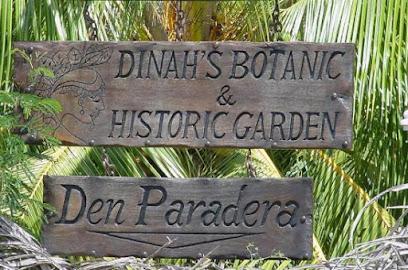
Duikcentrum van de Ven
Explore the stunning underwater world of Curaçao at Duikcentrum van de Ven, the premier diving center for unforgettable aquatic adventures.
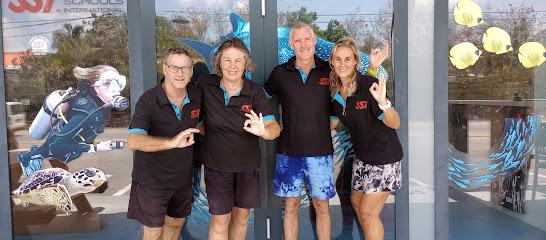
Tugboat Bar
Experience the vibrant atmosphere of Tugboat Bar in Willemstad, Curaçao, where tropical drinks and stunning sunset views await you.
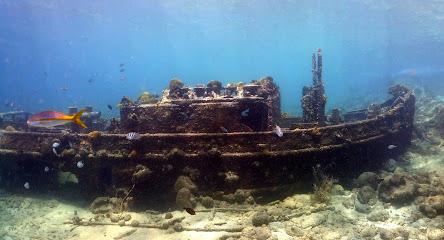
Playa Kanoa
Explore the serene beauty of Playa Kanoa in Curaçao, a perfect blend of relaxation, adventure, and vibrant Caribbean culture.
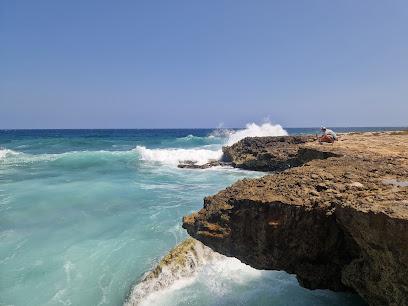
Mongui Maduro Historic House Museum & Library
Explore the Mongui Maduro Historic House Museum & Library in Willemstad, Curaçao - a captivating journey through the island's rich history and culture.
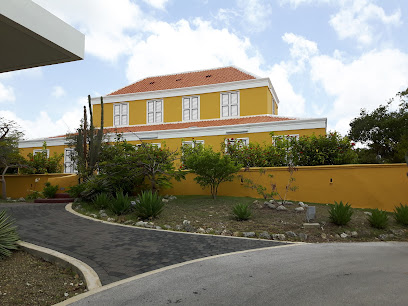
Dushi Diving
Explore the vibrant underwater world of Curaçao with Dushi Diving, your gateway to unforgettable diving adventures in the Caribbean.
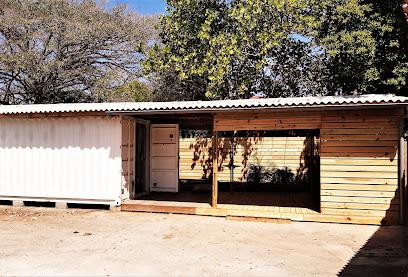
Street Art Skalo
Explore the stunning street art of Scharlooweg in Willemstad, Curaçao, where vibrant murals and creative expressions captivate every visitor.
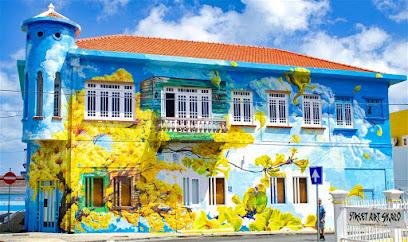
Zakitó Welcome mural
Discover the Zakitó Welcome Mural in Willemstad, Curaçao – a colorful symbol of local culture and hospitality that captures the island's vibrant spirit.
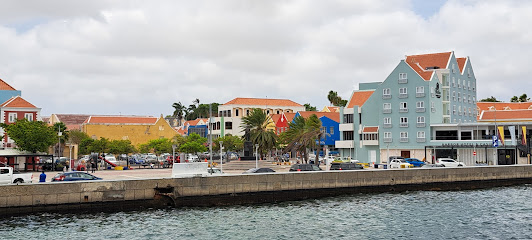
Casper Tours
Explore the vibrant landscapes and rich culture of Curaçao with Casper Tours, the ultimate destination for unforgettable adventures and experiences.
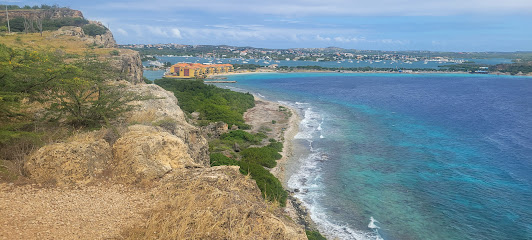
Dushi Walks (Otrobanda)
Explore the vibrant streets of Dushi Walks in Otrobanda, Willemstad, and immerse yourself in the colorful culture of Curaçao.
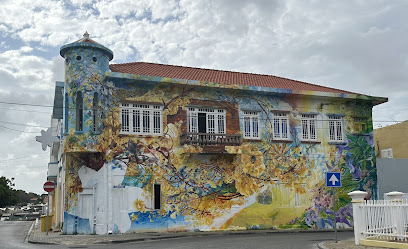
Landhuis Fuik ruins
Explore the historical Landhuis Fuik ruins in Willemstad, Curaçao, where rich history meets breathtaking natural beauty.
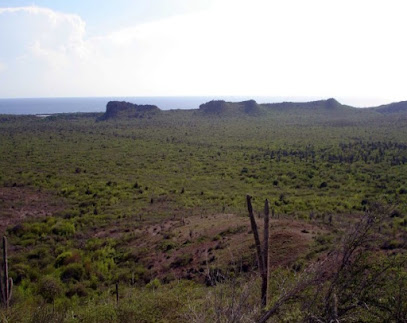
Caribbean Breeze Italian Ice
Discover the refreshing taste of Caribbean Breeze Italian Ice in Willemstad, Curaçao – a delightful stop for tourists seeking unique flavors and a sweet escape.
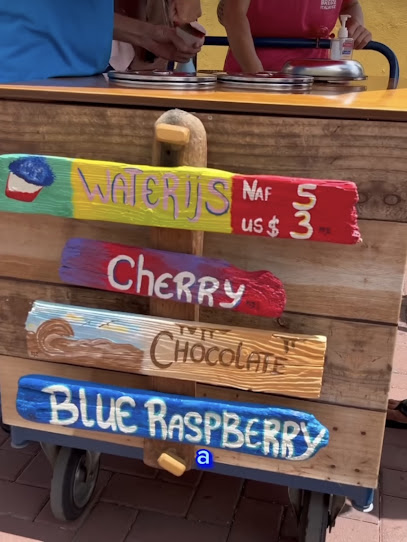
Essential places to dine
Zanzibar Beach & Restaurant
Discover the flavors of the Caribbean at Zanzibar Beach & Restaurant – where exquisite cuisine meets stunning ocean views in Curaçao.
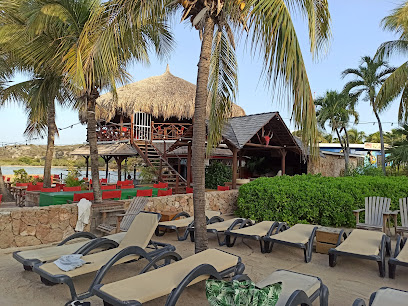
Brisa Do Mar
Discover Brisa Do Mar in Jan Thiel: A vibrant restaurant offering authentic Curaçaoan cuisine with stunning views and a warm atmosphere.
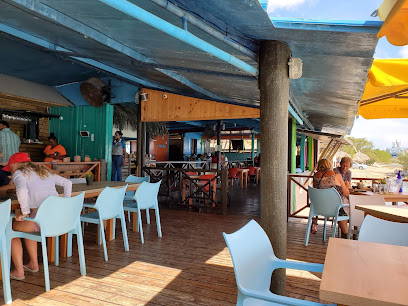
Zest Restaurant& Beach Cafe
Discover Zest Restaurant & Beach Cafe at Jan Thiel Beach - where Mediterranean flavors meet breathtaking ocean views in Curaçao.
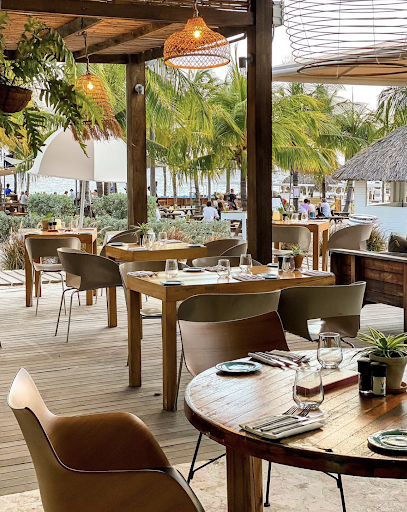
Sea Side Terrace
Discover culinary bliss at Sea Side Terrace in Curaçao, where fresh seafood meets stunning ocean views for an unforgettable dining experience.
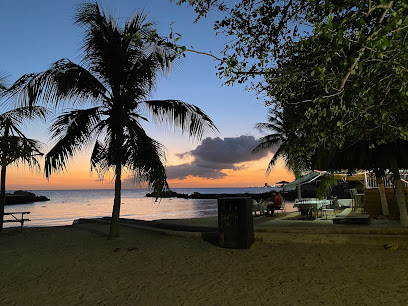
MOOD Beach Curacao
Discover culinary excellence at MOOD Beach Curacao - where vibrant flavors meet stunning ocean views.
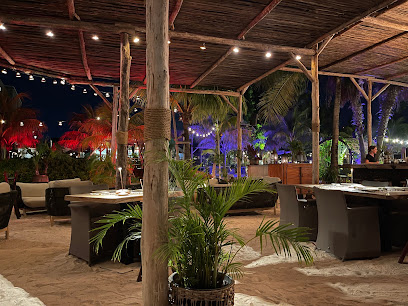
Koko's
Discover delightful Caribbean flavors at Koko's in Jan Thiel, where every dish tells a story of island culture and culinary excellence.
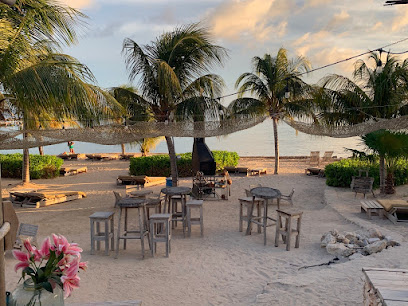
Fish & Joy Bistro & Wine Bar Curaçao
Experience the vibrant flavors of Curaçao at Fish & Joy Bistro & Wine Bar - where fresh seafood meets fine dining.
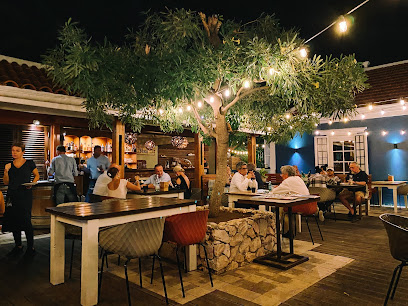
Boca 19 Curaçao
Experience exquisite Caribbean cuisine at Boca 19 in Curaçao's stunning Santa Barbara Beach & Golf Resort.
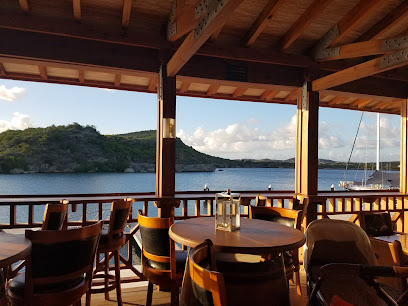
Tinto Bar Y Cocina Restaurant
Experience the flavors of the Caribbean at Tinto Bar Y Cocina, where fresh ingredients meet vibrant ambiance in Jan Thiel, Curaçao.
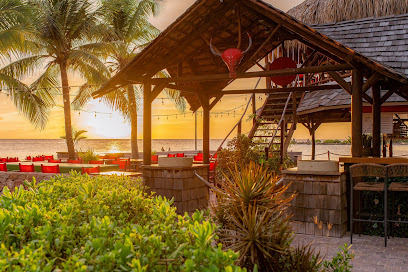
Il Forno Caracasbaai
Experience authentic Italian cuisine at Il Forno Caracasbaai in Jan Thiel, Curaçao - where every meal is a celebration of flavor and warmth.
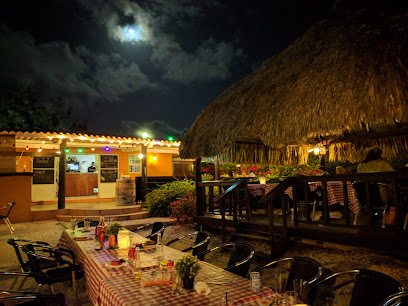
The Pier
Discover culinary delights at The Pier in Jan Thiel - where exquisite flavors meet breathtaking Caribbean views.
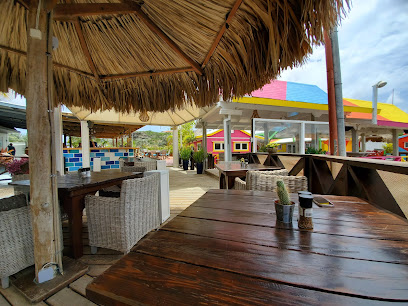
Blues Restaurant
Savor authentic Caribbean flavors at Blues Restaurant in Willemstad, featuring live music and a vibrant atmosphere perfect for any night out.
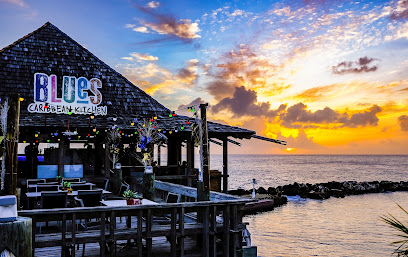
Angus Steakhouse & Bar
Experience culinary bliss at Angus Steakhouse & Bar in Willemstad - where succulent steaks meet Caribbean charm.
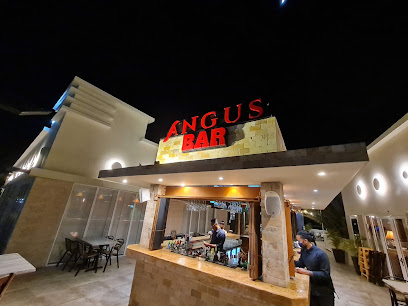
Prime Restaurant Curacao
Discover exquisite Caribbean flavors at Prime Restaurant Curacao - where culinary tradition meets modern dining.
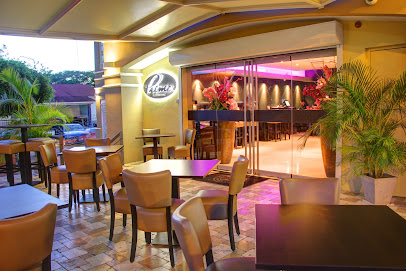
Bocas Restaurant
Experience the best of Caribbean cuisine at Bocas Restaurant in Curaçao, where flavor meets breathtaking ocean views.
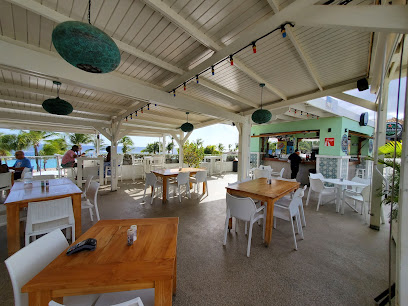
Markets, malls and hidden boutiques
Caribbean Handcraft
Discover authentic Caribbean craftsmanship at Caribbean Handcraft in Jan Thiel, Curaçao, a perfect spot for unique souvenirs and local artistry.
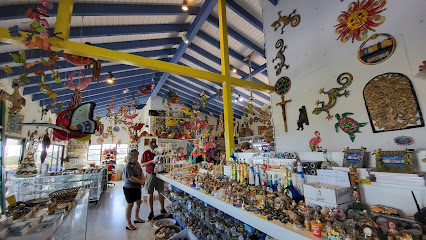
Curious 2 Dive
Discover the vibrant underwater world with Curious 2 Dive in Jan Thiel, Curaçao – a top-rated dive shop for all skill levels.
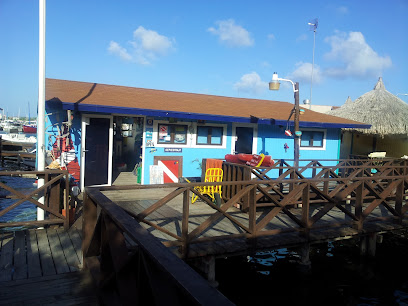
Jewel Junkie Curacao
Explore exquisite jewelry at Jewel Junkie Curacao, the ultimate destination for unique and handcrafted pieces that embody the spirit of the island.
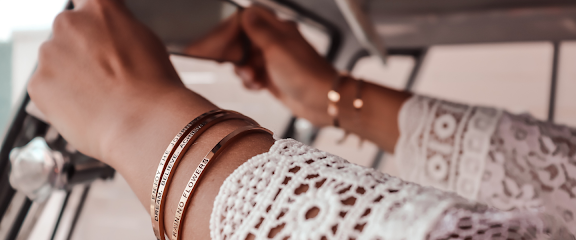
Chichi Shop Punda
Discover unique and vibrant souvenirs at Chichi Shop Punda, Willemstad's premier destination for local crafts and gifts that embody Curaçao's rich culture.
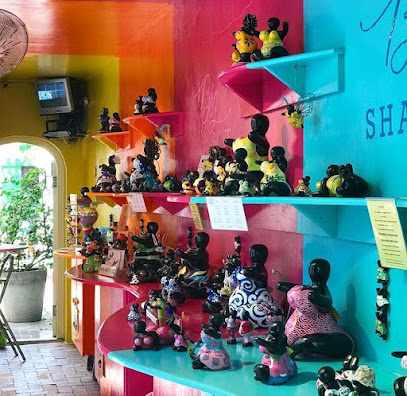
Shivam Fashion Stop
Discover stylish clothing, baby apparel, and home decor at Shivam Fashion Stop, a vibrant shopping destination in Curaçao.
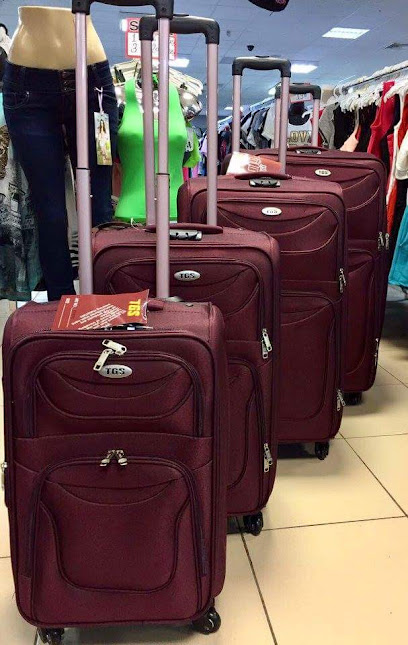
JOY by OPRA
Explore JOY by OPRA, a colorful gift shop in Willemstad, Curaçao, offering unique local crafts and souvenirs that embody the island's vibrant spirit.
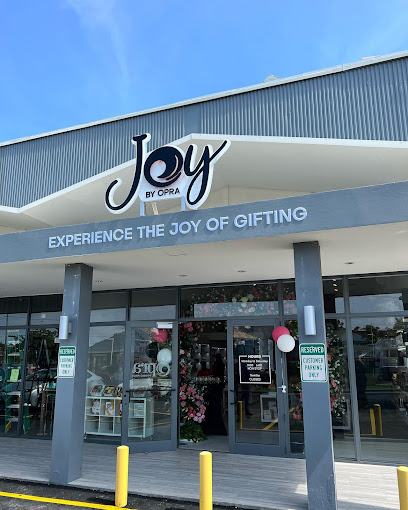
Island Treasures
Explore a vibrant selection of unique souvenirs and local crafts at Island Treasures in Willemstad, Curaçao, capturing the island's spirit in every purchase.
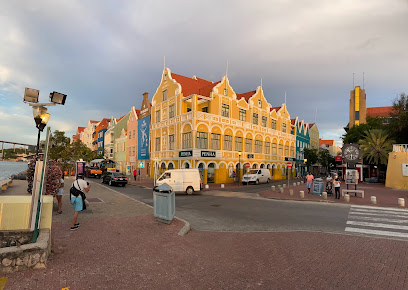
Art-by-Eve
Discover unique handmade gifts and local artistry at Art-by-Eve in Jan Thiel, Curaçao. A must-visit gift shop for every traveler.
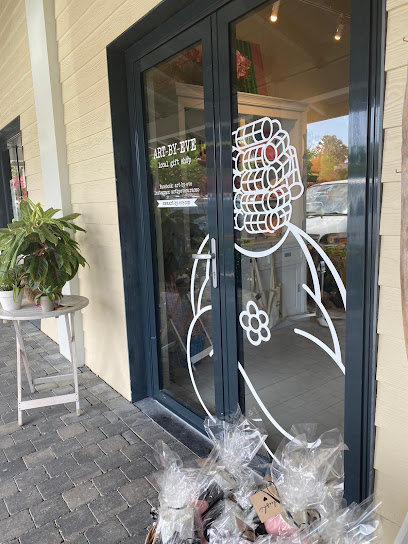
Kos Bon Shop
Explore the vibrant and charming Kos Bon Shop in Willemstad for unique souvenirs and local treasures that capture the essence of Curaçao.
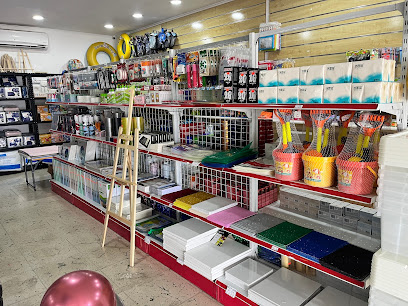
Crafted by Angel
Explore Crafted by Angel in Willemstad for unique gifts, local art, and captivating fragrances that embody the spirit of Curaçao.
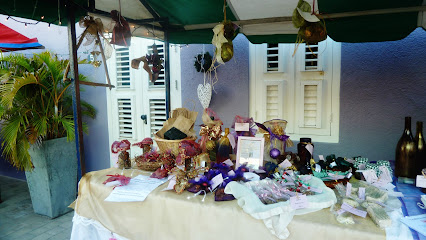
Soho Boutique
Explore the vibrant styles of Soho Boutique in Willemstad—your destination for unique fashion and local craftsmanship in Curaçao.
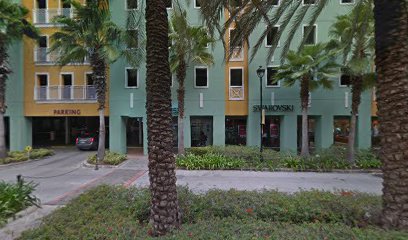
Gerda Gift Shop & Boutique
Explore Gerda Gift Shop & Boutique in Willemstad for unique gifts and local crafts that capture the essence of Curaçao's vibrant culture.
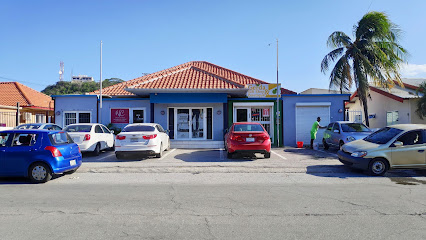
Out of the Blue
Explore the vibrant gift shop Out of the Blue in Willemstad, Curaçao, showcasing exquisite local crafts and jewelry perfect for every traveler.
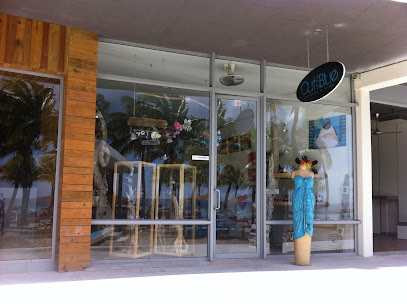
AWEsome Curacao
Explore AWEsome Curacao for unique souvenirs and local craftsmanship that captures the heart of this vibrant island paradise.
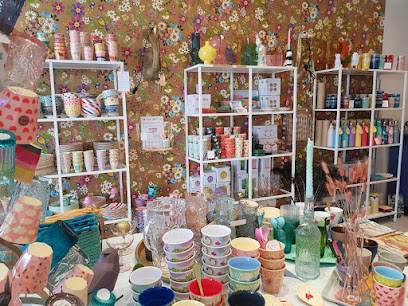
Blush Boutique
Explore Blush Boutique in Willemstad for unique clothing and a personalized shopping experience that reflects the vibrant fashion of Curaçao.

Essential bars & hidden hideouts
Wet & Wild Beach Club
Experience the ultimate beach getaway at Wet & Wild Beach Club in Curaçao: a vibrant bar with stunning views, delicious cocktails, and lively entertainment.
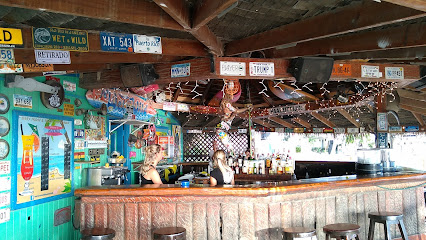
Captain's Sportsbar & Grill
Experience the thrill of sports and the taste of delicious grill at Captain's Sportsbar & Grill in Willemstad, Curaçao.
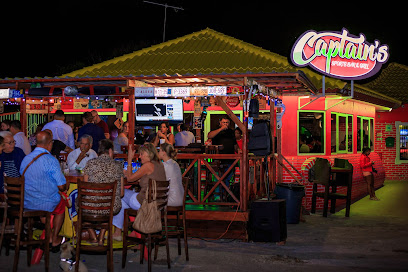
Bugs Bunny Terrace & Grill
Experience the vibrant flavors of the Caribbean at Bugs Bunny Terrace & Grill in Willemstad, where every meal is a celebration of island culture.

Mojitos & Bites
Experience the vibrant culinary delights of Mojitos & Bites, a premier sports bar and restaurant in Willemstad, Curaçao, offering delectable bites and refreshing cocktails.
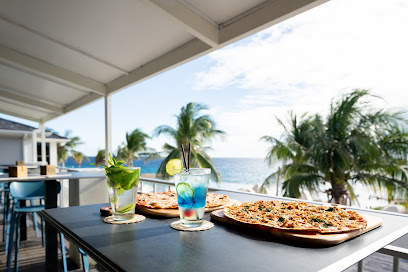
Tugboat Bar
Experience the vibrant atmosphere and stunning sunsets at Tugboat Bar, a must-visit waterfront destination in Willemstad, Curaçao.
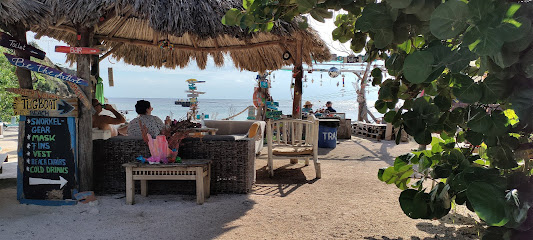
Schooner Bar
Discover the vibrant atmosphere and delicious small plates at Schooner Bar, a must-visit destination in Willemstad, Curaçao.

The World Best Mojito Bar
Experience the vibrant atmosphere and savor the finest mojitos at The World Best Mojito Bar in Willemstad, Curaçao.
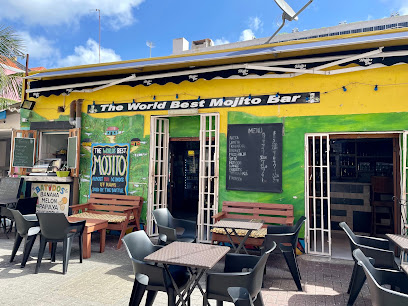
Cafe 40 B
Discover the vibrant flavors and stunning views at Café 40 B, a tropical bar experience on Seaquarium Beach in Willemstad, Curaçao.
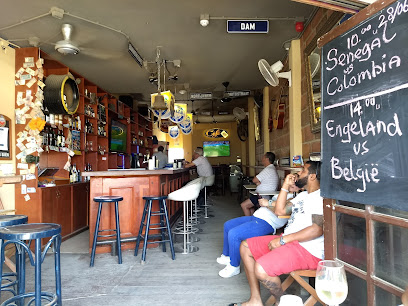
BAR P Curaçao
Discover the vibrant nightlife of Willemstad at BAR P Curaçao, where every night is filled with fun, drinks, and unforgettable memories.
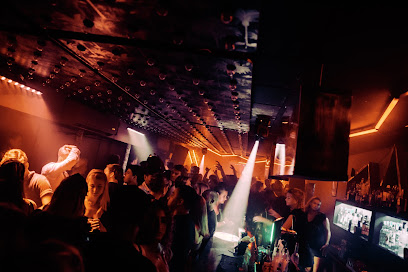
Paddy's Curacao
Experience the vibrant atmosphere and refreshing drinks at Paddy's Curacao, a top pub destination in Willemstad, perfect for socializing and relaxation.
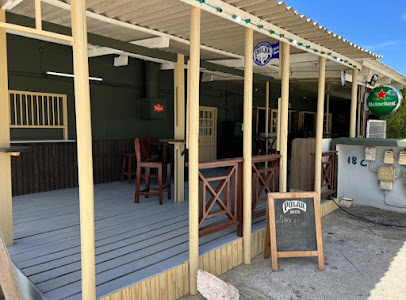
Rilèks Beach
Immerse yourself in the laid-back vibes of Rilèks Beach, a tropical bar in Willemstad, Curaçao, where relaxation meets vibrant beach culture.

Wing Keung Bar Restaurant
Discover the vibrant atmosphere of Wing Keung Bar Restaurant, a local gem in Willemstad, Curaçao, offering delicious Caribbean flavors and refreshing cocktails.
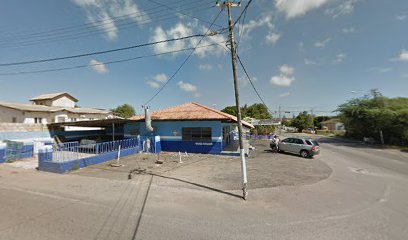
Dushi Sanjuanera
Experience the vibrant nightlife at Dushi Sanjuanera, a popular bar in Willemstad, Curaçao, known for its refreshing cocktails and lively atmosphere.
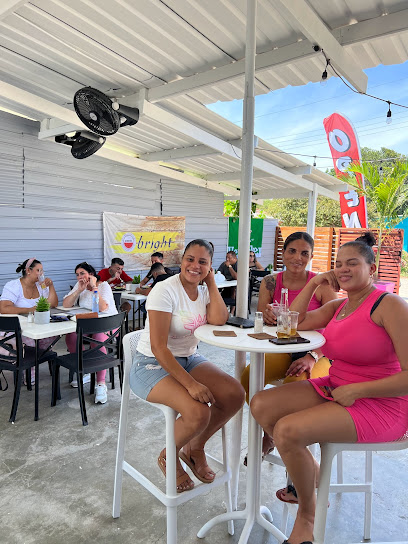
Bar Kèkè
Experience the vibrant energy of Bar Kèkè in Willemstad, Curaçao, where local drinks and a lively atmosphere await every traveler.
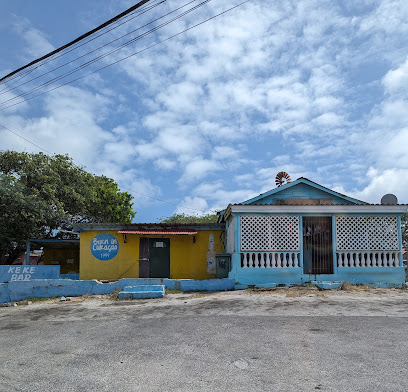
Caipirinha Bar Curacao
Indulge in refreshing caipirinhas and soak up the sun at Caipirinha Bar Curacao, a vibrant beachfront bar in Willemstad.
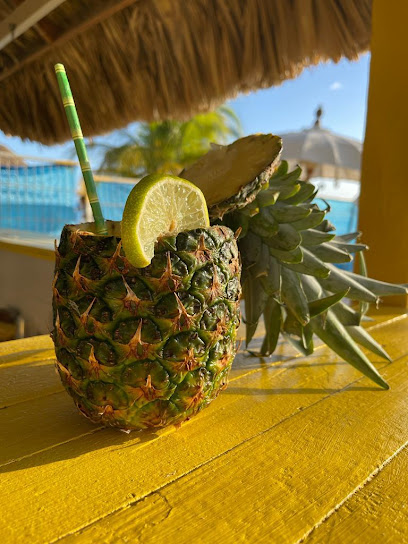
Local Phrases about Caracas Bay
-
- HelloBon dia
[bon dee-ah] - GoodbyeAyo
[ah-yo] - YesSi
[see] - NoNo
[no] - Please/You're welcomePor fabor
[por fah-bor] - Thank youDanki
[dahn-kee] - Excuse me/SorryDispensa
[dees-pehn-sah] - How are you?Kon ta bai?
[kohn tah bah-ee?] - Fine. And you?Bon. I boso?
[bon. ee boh-soh?] - Do you speak English?Bo ta papia Ingles?
[boh tah pah-pee-ah een-glehs?] - I don't understandMi no ta kompronde
[mee noh tah kohm-prohn-deh]
- HelloBon dia
-
- I'd like to see the menu, pleaseMi ke mira e menu, por fabor
[mee kee mee-rah eh meh-noo por fah-bor] - I don't eat meatMi no ta kome karni
[mee noh tah koh-meh kahr-nee] - Cheers!Salu!
[sah-loo] - I would like to pay, pleaseMi ke paga, por fabor
[mee keh pah-gah por fah-bor]
- I'd like to see the menu, pleaseMi ke mira e menu, por fabor
-
- Help!Yuda!
[yoo-dah] - Go away!Bai bai!
[bah-ee bah-ee] - Call the Police!Yama polis!
[yah-mah poh-lees] - Call a doctor!Yama un dokter!
[yah-mah oon dohk-tehr] - I'm lostMi a perde mi mes
[mee ah pehr-deh mee mehs] - I'm illMi ta malu
[mee tah mah-loo]
- Help!Yuda!
-
- I'd like to buy...Mi ke kumpra...
[mee keh koom-prah] - I'm just lookingMi ta mire so
[mee tah mee-reh soh] - How much is it?Kuantu ta esaki?
[kwan-too tah eh-sah-kee?] - That's too expensiveEsaki ta muchu karo
[eh-sah-kee tah moo-choo kah-roh] - Can you lower the price?Bo por baha e preis?
[boh por bah-hah eh preis?]
- I'd like to buy...Mi ke kumpra...
-
- What time is it?Kuantu or ta?
[kwan-too ohr tah] - It's one o'clockTa un or
[tah oon ohr] - Half past (10)Mita (10)
[mee-tah] - MorningMarduga
[mahr-doo-gah] - AfternoonTardi
[tahr-dee] - EveningAnochi
[ah-noh-chee] - YesterdayAyera
[ah-yeh-rah] - TodayAwe
[ah-weh] - TomorrowMañan
[mah-nyahn] - 1Un
[oon] - 2Dos
[dohs] - 3Tres
[trehs] - 4Kuater
[kwah-tehr] - 5Sinku
[seen-koo] - 6Seis
[sehs] - 7Shete
[sheh-teh] - 8Ocho
[oh-choh] - 9Nuebe
[nweh-beh] - 10Dies
[dee-ehs]
- What time is it?Kuantu or ta?
-
- Where's a/the...?Unda ta e...?
[oon-dah tah eh] - What's the address?Kua ta e adres?
[kwah tah eh ah-drehs] - Can you show me (on the map)?Bo por mustra mi (riba e mapa)?
[boh por moos-trah mee ree-bah eh mah-pah] - When's the next (bus)?Kuantu ta e prosimo (bus)?
[kwan-too tah eh proh-see-moh] - A ticket (to ....)Un tiki (pa ....)
[oon tee-kee pah]
- Where's a/the...?Unda ta e...?
History of Caracas Bay
-
Long before European explorers set foot on Curacao, the Arawak Indians, specifically the Caquetio, inhabited the island. They established small fishing communities and utilized the natural resources of Caracas Bay for sustenance. Archaeological findings, including pottery and tools, offer a glimpse into their daily lives and traditions.
-
In 1499, Spanish explorers led by Alonso de Ojeda discovered Curacao, including Caracas Bay. The Spanish initially named the island 'Isla de los Gigantes' due to the tall stature of the indigenous people they encountered. Caracas Bay became a strategic point for the Spanish, who sought to exploit its natural harbor.
-
In the early 17th century, the Dutch West India Company took control of Curacao from the Spanish. To protect the island from pirates and other European powers, the Dutch constructed Fort Beekenburg in 1703 at the entrance of Caracas Bay. The fort, named after Admiral Beekman, played a crucial role in defending the island and remains a well-preserved historical site today.
-
During the 17th and 18th centuries, Caracas Bay was a hotspot for pirate activity. The natural harbor provided a perfect hideout for pirates who preyed on passing ships. Smuggling also became rampant, with Caracas Bay serving as a clandestine point for illicit trade in goods such as rum, tobacco, and slaves.
-
During World War II, Caracas Bay gained strategic importance once again. The Allies used the bay as a naval base to protect the vital oil refineries on Curacao, which were crucial for the war effort. The remnants of military installations and bunkers can still be seen around the bay, serving as a reminder of this turbulent period.
-
Caracas Bay also has a history as a quarantine station. In the late 19th and early 20th centuries, the bay was used to isolate ships and passengers suspected of carrying contagious diseases. The quarantine station played a critical role in preventing the spread of illnesses such as yellow fever and cholera to the island's population.
-
Today, Caracas Bay is a popular destination for both locals and tourists. The bay's crystal-clear waters, vibrant marine life, and historical landmarks attract divers, snorkelers, and history enthusiasts. The transformation of the area into a recreational hotspot highlights the blend of natural beauty and rich historical heritage that defines Caracas Bay.
Caracas Bay Essentials
-
Caracas Bay is located on the southeastern coast of Curaçao, near the capital city of Willemstad. The nearest international gateway is Curaçao International Airport (CUR), which is approximately 25 kilometers from Caracas Bay. From the airport, you can take a taxi or rent a car to reach Caracas Bay. The journey typically takes about 30 minutes by road. Alternatively, some hotels offer shuttle services for their guests.
-
Public transportation in Curaçao is limited but available. Buses run from Willemstad to Caracas Bay, although service can be infrequent. Taxis are readily available and are a convenient, albeit more expensive, option. Renting a car is highly recommended for flexibility and convenience, especially if you plan to explore other parts of the island. Bicycles can also be rented for short-distance travel and for a more eco-friendly option.
-
The official currency in Curaçao is the Netherlands Antillean Guilder (ANG), also known as the Florin. U.S. dollars are widely accepted throughout the island. Credit cards are commonly used in most hotels, restaurants, and larger shops, but it is advisable to carry some cash for smaller establishments and market purchases. ATMs are available in Caracas Bay and nearby areas.
-
Caracas Bay is generally safe for tourists, but it is important to stay vigilant. Avoid leaving valuables unattended on the beach or in your car. Some areas in Willemstad, particularly Punda and Otrobanda, have higher crime rates, especially after dark. Stick to well-lit and populated areas. Always lock your car and accommodations and keep an eye on your belongings in crowded places.
-
In case of emergency, dial 911 for immediate assistance. Caracas Bay has access to medical facilities and a nearby police station. It is highly recommended to have travel insurance that covers medical emergencies. For minor health issues, there are pharmacies where you can purchase over-the-counter medications. Keep emergency contact numbers handy and inform someone of your travel plans.
-
Fashion: Do wear lightweight, breathable clothing due to the tropical climate. Avoid wearing beachwear when not at the beach. Religion: Do respect local customs and traditions. While Curaçao is relatively liberal, modest dress is appreciated in religious sites. Public Transport: Do have small change for bus fares. Don't expect punctuality, as bus schedules can be erratic. Greetings: Do greet people with a warm 'Bon dia' (Good day) or 'Bon tardi' (Good afternoon). A handshake is also common. Eating & Drinking: Do try local dishes such as 'Keshi Yena' and 'Funchi'. Don't refuse food or drink when offered, as it may be considered impolite.
-
To experience Caracas Bay like a local, visit the local beaches such as Tugboat Beach for snorkeling and diving. Engage with local vendors at the floating market in Punda, Willemstad, for fresh produce and seafood. Take part in local festivals and events to immerse yourself in the culture. Renting a kayak to explore the Spanish Water Lagoon is also a popular activity among locals.
Trending Landmarks in Caracas Bay
Nearby Cities to Caracas Bay
-
Things To Do in Julianadorp
-
Things To Do in Sint Michiel
-
Things To Do in Barber
-
Things To Do in Soto
-
Things To Do in Sabana Westpunt
-
Things To Do in Westpunt
-
Things To Do in San Nicolas
-
Things To Do in Savaneta
-
Things To Do in Santa Cruz
-
Things To Do in Pos Chiquito
-
Things To Do in Paradera
-
Things To Do in Sero Blanco
-
Things To Do in Tanki Leendert
-
Things To Do in Oranjestad
-
Things To Do in Noord

